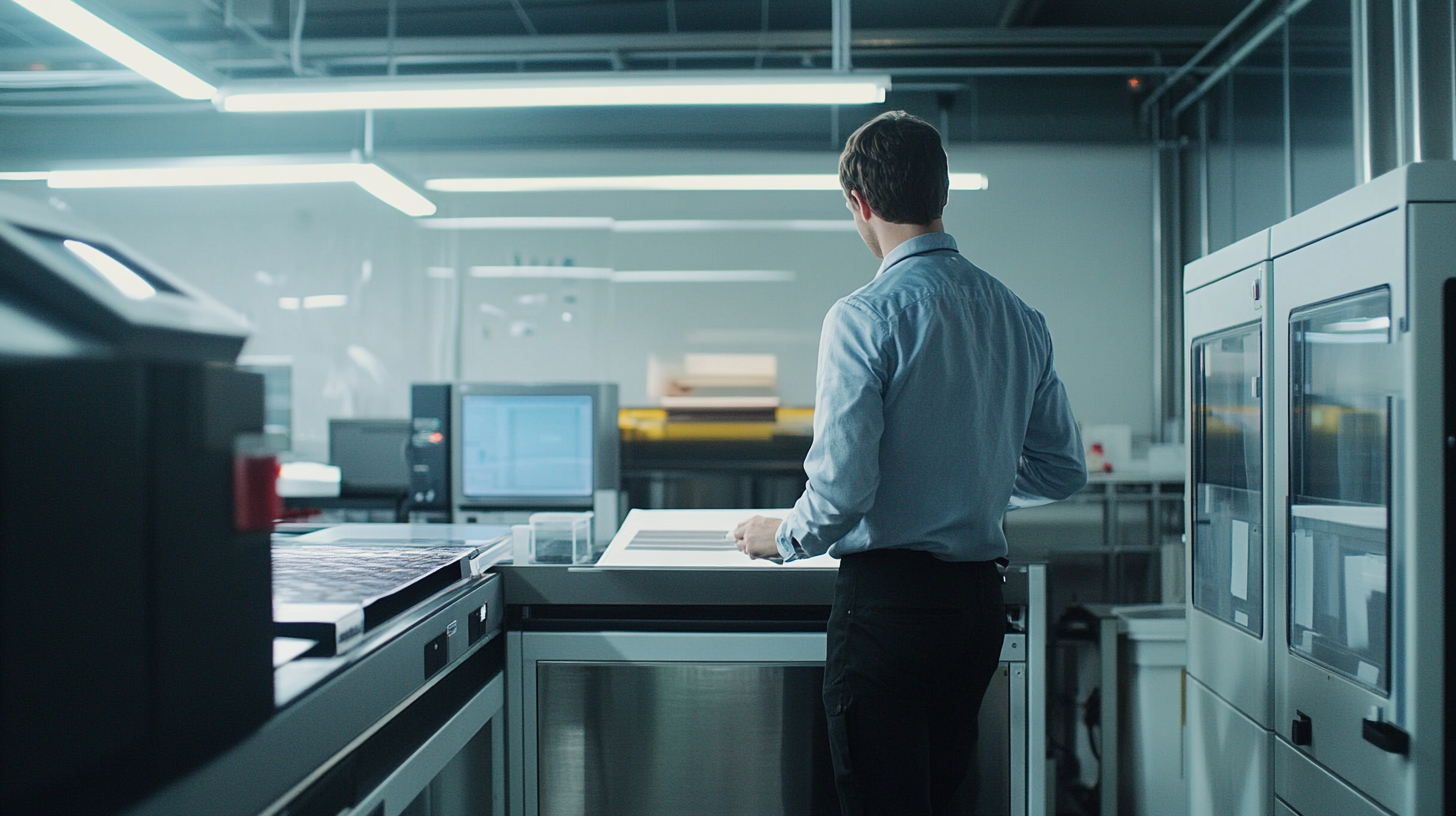Partner Login
Enter your username and password here on order to log in on the partner portal:
No registered partner yet?
Register nowHow to Optimize Your Ink Jet Printing Process for Maximum Efficiency and Cost Savings
In the rapidly evolving world of printing technology, optimizing the ink jet printing process has become paramount for businesses seeking to enhance efficiency and achieve significant cost savings. According to a recent report by Smithers Pira, the ink jet market is projected to grow at a CAGR of 5.8% from 2020 to 2025, reaching a value of $24.4 billion by the end of that period. This growth underscores the increasing reliance on ink jet solutions across various industries, including packaging, textiles, and commercial printing. By fine-tuning parameters such as print speed, ink usage, and machine maintenance, companies can reduce operational costs and waste, while maximizing output quality. As organizations strive to meet the demands of a competitive market, understanding the nuances of the ink jet printing process will not only lead to better resource management but also contribute significantly to overall productivity and profitability.

Understanding the Basics of Inkjet Printing Technology
Inkjet printing technology has rapidly evolved, becoming a cornerstone of various industries. Understanding its fundamental operations is crucial for optimizing efficiency and cost savings. At its core, inkjet printing utilizes controlled jets of ink to create precise images or text on a variety of substrates, with advancements in piezoelectric and thermal inkjet methods enhancing performance and reducing costs.
Current trends indicate a significant shift in the industrial inkjet printers market, projected to skyrocket to $11.22 billion by 2031. This growth is driven by industries seeking to exploit the flexibility and speed of inkjet technology for high-quality production. Moreover, innovations in materials and deposition techniques have broadened the application spectrum, allowing for the integration of printed electronics and the development of advanced components like memristors.
Furthermore, the application of machine learning to monitor inkjet jetting status holds the potential for drastically improving print quality and reducing waste. By implementing these advanced technologies, businesses can not only enhance their inkjet printing processes but also ensure they remain competitive in a rapidly evolving market.
Identifying Common Inefficiencies in Inkjet Printing Processes
Identifying common inefficiencies in inkjet printing processes can lead to significant improvements in both productivity and cost-effectiveness. According to the 2023 Printing Industry Report, nearly 30% of inkjet printing operations struggle with workflow bottlenecks, which can substantially increase turnaround times and operational costs. These bottlenecks are often caused by outdated technology, insufficient training, or poorly designed workflows.
Another key area of inefficiency is ink usage. A study by the Inkjet Printing Solutions Association found that up to 20% of ink is wasted due to improper settings and calibration issues. This not only inflates material costs but also contributes to environmental waste, as excess ink often leads to increased solvent disposal costs. By investing in precise ink management systems and training personnel on optimal settings, businesses can reduce waste and maximize their ink investments.
Additionally, regular maintenance of inkjet printers is crucial. The 2022 Equipment Maintenance Survey revealed that 40% of print services reported frequent machine downtime due to lack of preventive maintenance. This not only affects the output but also limits the ability to meet client deadlines. Implementing a routine maintenance schedule can minimize downtime and help organizations maintain a steady output, ensuring efficiency and client satisfaction.

Strategies for Reducing Ink and Paper Waste
To optimize your ink jet printing process and achieve significant cost savings, focusing on reducing ink and paper waste is essential. One effective strategy is to fine-tune printer settings for your specific printing needs. This includes adjusting the print quality and switching to draft mode for less critical documents. By using lower-quality settings when appropriate, you can significantly decrease the amount of ink consumed without sacrificing readability.
Additionally, utilizing double-sided printing can dramatically cut paper usage. Encourage your team or household to embrace this practice, allowing for more efficient use of resources. Moreover, exploring software solutions that allow for document optimization, like removing unnecessary images or compressing files, can help further reduce both ink and paper consumption. By implementing these strategies, you not only contribute to environmental sustainability but also enjoy considerable savings on your printing costs.
Ink and Paper Usage Distribution in Ink Jet Printing
Maintenance Tips for Prolonging Printer Lifespan and Performance
Maintaining your inkjet printer is crucial for ensuring its longevity and optimal performance. Regular maintenance practices can significantly impact both the quality of your prints and the overall lifespan of your equipment. One effective approach is to clean the print heads periodically. Clogged nozzles can lead to streaky prints and may require additional ink for cleaning, thus increasing your costs. Many printers come with a built-in cleaning function that can be easily accessed through the printer settings. Engaging this feature every few weeks can help prevent buildup and keep your printer running smoothly.
Another essential aspect of printer maintenance is monitoring ink levels and replacing cartridges before they run completely dry. Using your printer with low ink can damage the print heads and lead to costly repairs. Keeping an eye on ink levels can also help you avoid interruptions in your printing projects. Additionally, storing spare cartridges in a cool, dry place can help maintain their quality over time. Lastly, ensuring that your printer is located in an area free from dust and excessive humidity will prevent premature wear and tear, allowing you to maximize both efficiency and cost savings.
Ink Jet Printing Process Efficiency Optimization
This chart illustrates the estimated time in hours required for different aspects of maintenance and optimization of the ink jet printing process. Regular maintenance, quality paper, and proper calibration contribute significantly to the printer's lifespan and overall cost savings.
Evaluating Cost-Effective Ink and Paper Options for Your Printing Needs
When it comes to optimizing your ink jet printing process, choosing the right paper and ink is crucial for achieving cost savings without compromising quality. A study conducted by Smithers Pira reveals that paper can account for approximately 30% of total printing costs. Therefore, selecting cost-effective paper options, such as uncoated or recycled papers, can lead to significant savings while still delivering satisfactory print quality for everyday documents.
Ink selection also plays a pivotal role in the overall efficiency of your printing process. According to the NABERS report, businesses can save up to 60% on ink costs by switching to compatible ink cartridges rather than using OEM products. These alternatives not only reduce expenses but also often maintain printing quality, enabling printers to perform efficiently. Furthermore, understanding the specific ink requirements for your paper type can optimize absorption and drying, ultimately enhancing print outcomes and reducing waste.
By evaluating both ink and paper options meticulously, businesses can streamline their printing processes and achieve notable cost reductions. Adopting a strategic approach to your printing supplies is essential for enhancing overall operational efficiency and conserving limited resources.
